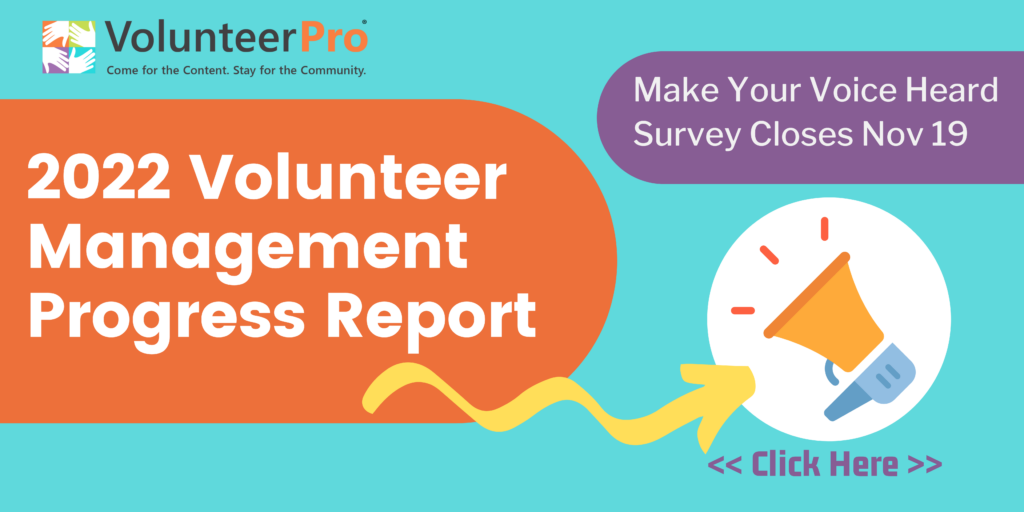 Volunteer Engagement Tips That Will Foster Deep Commitment
Volunteer Engagement Tips That Will Foster Deep Commitment
I often write about how organizations can improve their volunteer engagement from the perspective of an experienced nonprofit consultant. Today, I thought I’d write from a different angle and explore my volunteer experiences.
I’ll look at the following — Why did I start? What do I get out of it? Why do I stay? And, why do I keep giving more? — in order to better understand why it works from the volunteer perspective. And, I’ll suggest some key takeaways for volunteer-led organizations.
The Background on My Volunteer Engagement Activities
I volunteered for a local health care advocacy organization for almost two years. It’s a tiny operation with only five paid staff to cover the entire state of Tennessee. I started as a volunteer with the local organizing group. I initially attended meetings and looked for ways to help out at events. As I have grown with the organization, my levels of responsibility have expanded — I started by attending meetings, then moved on to develop a training our local volunteer speakers bureau. I later joined the board of directors, held a birthday fundraiser for the organization, became the fundraising committee chair, and recently joined the executive committee.
Through my work, I talk to many volunteer managers who would be overjoyed to encounter this level of volunteer commitment. So, let’s take a look at why this volunteer gig works and what you can do to replicate it.
Why I Joined
I’d like to say that it was because the organization had a fantastically compelling volunteer appeal, but I’d be lying. In fact, I’ve never seen their volunteer ads. Two years ago, I had just moved to Tennessee. I wanted to get involved in my new community and help move health reform forward. Having provided services to the uninsured, and having been uninsured myself, it had become a personal passion.
I was speaking at a national conference for health care advocates in Washington DC and attended a workshop where, Viola!, there was someone speaking from Tennessee. I introduced myself and mentioned my interest in getting involved locally. By the end of that evening, I had met two friendly people who would help me get started volunteering. And, as I continued attending conference sessions, I learned that many people knew and respected the organization to which I had been referred, thus giving me even more confidence that it might be a good fit.
The Key Takeaways for Effective Volunteer Engagement
- Work hard to be an organization that people look up to and talk about.
- Let everyone know you are always looking for the right volunteers.
- Focus your activities and messaging around a core community problem you are trying. to solve, so that people can easily identify and send the right volunteers your way.
- Connect with people who have expressed interest right away, and pounce on the opportunity to give a friendly greeting in person.
- If you are able to find volunteers who have a similar passion for your cause, the rest is pretty easy; they are already motivated without your “hard sell.”
What’s My Return on Investment?
There were three main reasons I was looking for a place to volunteer
1) I wanted to have an impact on who received healthcare in my community
2) I wanted to meet other nonprofit professionals in my new home state
3) I wanted to get out of my isolated office and socialize
All three expectations were met early on.
At my first volunteer meeting, I met a group of friendly people who were happy to welcome me into their fold. They took the time to chat with me and find out who I was. Many worked for local nonprofits and volunteered for a number of causes. And, I continued to learn more about the important work they were doing. At one meeting we watched a slide show of the local volunteers in action at various events.
At subsequent meetings, the coordinator and volunteers reported back how many people attended presentations and which media outlets had covered pitched stories. When I decided to host a fundraiser for the organization, many of my peers attended and supported it, which for the new girl in town was a relief. The team was engaged, active, and supportive. We were making a difference.
The Key Takeaways
- Never waste an opportunity to celebrate and share successes with your team.
- Always report back to volunteers on how you are progressing toward your goals.
- Encourage a welcoming and relaxed environment.
- Be extra supportive to new volunteers as they acclimate.
What Keeps Me Coming Back?
Like most volunteers, I have a busy work and home life. I travel frequently and, due to the nature of my business, my workload fluctuates from season to season. My volunteer schedule helps me plan in advance. Our monthly meetings are held on the same day of the month, time, and place. Our volunteer team also keeps in touch throughout the month via a Google group. Meeting minutes are sent out via email, for those of us who missed the meeting. My board meetings and committee conference calls are also scheduled out for the year, so I can reserve that time on my calendar way in advance.
At the same time, my volunteer work is very flexible. I can volunteer to staff local events as my schedule allows. Also, the organization is able to take advantage of my pro-bono skills because I can complete projects on my own time and in my home office. I’ve developed fundraising scripts, board training, and I forward the ideas and tools I come across in my day-to-day work to interested folks at the organization each week. My schedule works because I am driving when and how much I contribute to the organization, based on my availability, not the other way around. And, although my volunteer productivity is down during busy work periods, I have a lot of time to give when I’m waiting for a new contract to start.
The Key Takeaways
- Offer a mix of structured and unstructured ways for volunteers to help.
- Allow some volunteers to work from home if they need to.
- Don’t push for extra time if the volunteer doesn’t have it at the moment.
- When scheduling, let volunteers be in the driver’s seat.
- Make sure volunteer communication tools are in place that does not require gatekeepers and allow for free information flow.
Why Do I Stretch to Give More?
Although life can get very busy, I’ll often stretch myself a little just to help. Why do I do it? Simply, because I’m asked. I know the organization needs our support. And, usually, all it takes is a phone call, which usually comes from a fellow volunteer leader. What helps is that they usually can tell me exactly what I’m being asked to do and how much time I’m being asked to commit, and why I’m the right person for the job. This gives me a place to negotiate from if my schedule is tight and helps me feel secure that I am taking responsibility for something I’m fairly sure I can complete successfully. When I’m asked to do some vague task, I’m skeptical about committing.
Another reason I’ve stayed and grown with the organization is that I get a lot of positive feedback from staff and my fellow volunteers. I get touching thank you cards and emails (not form letters or plaques), and people approach me after training to tell me how much they’ve appreciated my leadership. It may seem small, but hearing how my work is helping the overall cause keeps me feeling good about what I’m doing. It’s the human touch we all need.
The Key Takeaways
- Involve volunteers in enlisting their peers to help with specific tasks or projects.
- When asking for support, clearly define the tasks, the expected outcomes, and the estimated time it will take.
- Also, communicate to the volunteer which of their special skills are being tapped for this particular project.
- Be open to negotiating what part of the project the volunteer chooses to take on.
- Never underestimate the power of a sincere and tailored expression of gratitude.
I’m not out of the ordinary. There are many people in your community just like me — people who have a personal calling and want to make a difference. If you can connect your passions with theirs and accommodate their specific needs to the best of your ability, you’ll create better volunteer engagement for your organization. And, you’ll go a long way toward fulfilling your mission and vision for the future.
Leaders like you have exhibited phenomenal spirit and dedication in 2021. And we want to ensure that your voices and experiences are heard.
In this survey we will explore the impacts of COVID on both you and your organization over the past year. We appreciation your participation.
Your answers will be anonymous and the survey takes LESS THAN 5 MINUTES to complete. At the end of the survey, you will be able to register for a free Sneak Peek Webinar where we will share the early results exclusively with participants before the general public.








Leave A Comment